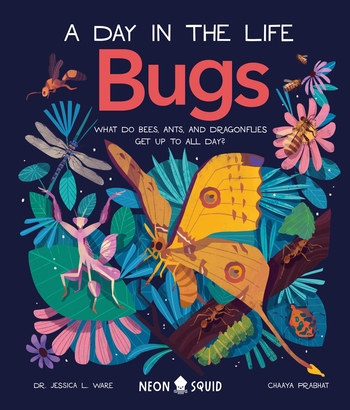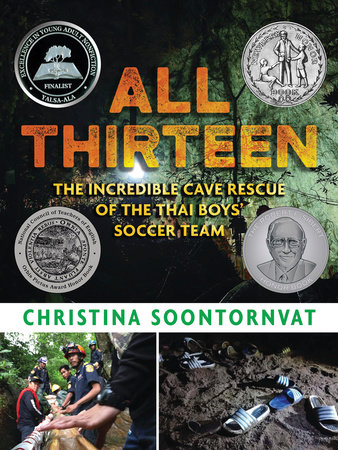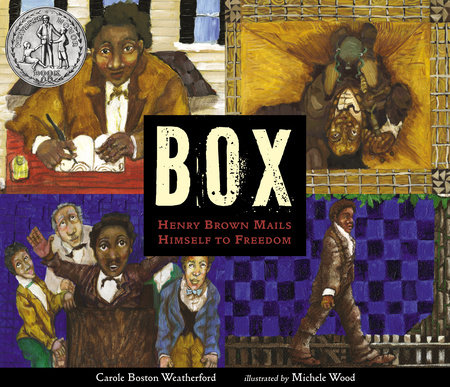Disrupting Nonfiction Part 5: Browsable
- Jennifer LaGarde

- May 7, 2021
- 10 min read
This is the final blog posts in a series that will serve as a guide for practicing “disruptive collection development” in the context of the nonfiction collection. Each day we’ll explore a different category of nonfiction (as developed by Melissa Stewart) along with strategies for thinking critically about the collection development procedures that we employ for selecting, cataloging and shelving those books. The first post in this series unpacks the inspiration for this work. As noted there...
The goal of “disruptive collection development” is to move beyond the occasional infusions of inclusivity offered by intentionally adding, or even focusing on, historically marginalized voices in book ordering throughout the year. While this is surely a best practice, it’s also a strategy that is rendered inconsistent and temporary by its dependence on the whims of staffing and funding. Only through holistic, purpose driven collection development can we move toward more permanent change that is both systemic and procedural.
Thank you to the team at Disrupt Texts who were early readers of these posts and who gave me permission to use the term "disrupt" in this context. Their mission charges us with challenging the traditional canon in order to create more inclusive, representative, and equitable collections. These posts are my attempt to support librarians in using their nonfiction collections as a vehicle for this important work.
To learn more about Melissa Stewart's five categories of nonfiction, I encourage you to visit the first post in this series which contains additional links and context. Links to each remaining post will be added as they are published.
Part 1: Traditional Nonfiction
Part 2: Active Nonfiction
Part 3: Narrative Nonfiction
Part 4: Expository Literature
Part 5: Browsable Nonfiction (You are here!)
Category 5: Browsable Nonfiction
Definition: “These beautifully designed, lavishly illustrated books with short text blocks and extended captions revolutionized children’s nonfiction by giving fact-loving kids a fresh, engaging way to access information. Readers can easily dip in and out, focusing on the content that interests them most, or they can read the books cover to cover..” (Stewart, 2018)
Features:
Eye-catching design, lavishly illustrated
Short blocks of straightforward text
Can be read cover to cover or by skipping around
Great for shared reading
Expository writing style
Description text structure
Disruptive collection development:
Using Data: Research has revealed alarming disparities in how school suspensions disproportionately affect BIPOC students. (Camera, 2020) These inequities may seem disparate from library work, but if we believe that reading has the power to transform lives, (and I do!), then our role in disrupting these systems in our own schools becomes more clear. Here's some tips for getting started:
Be intentional about reviewing daily or weekly lists of students who receive some version of in school suspension or who are suspended from school for periods of time. Some questions to think about as you explore the data are:
Who are these kids? What grade levels, learning abilities/differences, races, genders, and socio-economic levels, etc., are most represented in the kids for whom discipline systems define their school experience?
Do you know these kids? I like to think about the answer to this question using a traffic light protocol with three categories: green, yellow and red. Green represents kids with whom you have a strong relationship: in addition to knowing basic information about them, you also know what kinds of books they like, or who their best friends are. Perhaps you've spoken to their parents/grandparents a few times. These are the kids with whom you share jokes or who choose to spend time with you, because they already feel as though the library is their space. Yellow represents kids who you know by name and might recognize in the hall, but that you know nothing (or very little) else about. And Red represents those kids that you do not know at all. Schools are big and these are the kids that you've never gotten to know because they do not come to the library, or if they do, they do not engage with you. As you examine the discipline data for your school, ask yourself how many of these kids fall into the Green category? How many Yellow? And how many are Red?
What library/reading access points have you created specifically for these kids? Because browsable nonfiction is highly accessible with an emphasis on engagement, curating a collection of browsable nonfiction that speaks directly to kids who may already feel disenfranchised by school can build a bridge between them and you and the wider library collection.
In the catalog: While limiting student access to specific sections of the library (whether it be by topic or reading level, etc) should be avoided, creating specific call numbers for smaller collections that are limited for use by specific patrons can be a way to disrupt your collection to prioritize readers who feel marginalized by school in general. Here are some tips for getting started:
Use your catalog to curate minicollections of browsable nonfiction that are made available only to readers who are serving ISS.
A similar collection can be curated and housed in an associate principal or dean of students’ office, for kids who may be using the space to manage emotions before returning to class.
Similar mini-collections, featuring browsable nonfiction can be placed throughout the school to engage readers who are otherwise excluded from participating in the library.
Provide the adults in those spaces with easy ways to keep track of books that readers want to checkout. A printed list of all the books in the mini collection with a few columns added to record the reader's name and student number should be sufficient.
If library fines/lost materials are still being used to restrict a reader's access to books as a general policy, ignore those procedures in the case of these mini-collections. Your goal here is to provide already disenfranchised readers with a buoy to cling to in what might feel like a dark and stormy sea.
These mini-collections can be checked out to the adult responsible for those spaces, or you can create a dummy patron called "ISS Room," for example, and check the books out to the space rather than the person. However, these options will not provide you with circulation data that might be useful later. Instead, use your LMS to create sub-locations in the catalog to indicate where these books are housed. While choosing this option will result in the books still showing as available in your OPAC, you can add language to the record reminding users that these titles are not a part of the general collection.
Selection: The challenge of selecting browsable nonfiction that represents the interests, passions and aspirations of the very readers you hope to engage will be profoundly affected by your answers to the questions posed in the section (above) related to data. If you find that you don't really know much about the kids whose names appear frequently on discipline reports, then getting to know them is job one. With that in mind, involving them in the selection process of your browsable nonfiction can be an effective way to both disrupt traditional collection development and serve as an intervention for kids who really need at least one positive school experience each day.
Invite those kids to be part of a "focus group" to help you identify the features and qualities of browsable nonfiction that readers are most drawn to.
For the purpose of their research, have them peruse a small selection of browsable nonfiction to discuss what they like and what they don't.
Record their responses or have them complete a short survey to capture their input.
Have them create a wish list of the types or topics they'd like to see future purchases of library nonfiction .
When the books come in, create bookplates to match the book with the reader who selected it.
Give these kids a VIP pass for checking out the books they helped select before anyone else does.
If intervention or grant funds are available, purchase additional copies of these books for kids to take home as "forever books."
Because these titles are attractive to readers who may not yet have developed positive reading identities, it is essential that inclusivity be reflected both in the pages of the book and on the cover.
When you are selecting browsable nonfiction, prioritize books that were authored, edited and illustrated by frequently underrepresented voices. AND be sure that the stories told in those books reflect excellence, accomplishment and joy. It’s up to you to ensure that your collection reflects the reality that the lives of historically marginalized populations are not defined by trauma. The library has the potential to be one of, if not the, only spaces where the messages kids internalize about people who look and live like them are positive.
On the shelf: When creating mini-collections for targeted readers, it's important to include asynchronous readers advisory as part of the collection. Because you likely will not be in the room to provide readers’ advisory when a mini collection is perused, use these tools as a way to “sell” the books and let readers know that they were curated specifically for them.
Use flipgrid (or some other tool) to record video book talks of at least some of the books in your mini-collection. This resource can become an instructional tool for the adult who is supervising the in school suspension room, etc..
Create personalized bookmarks, that help readers understand how and why the book was selected and how much you hope they enjoy it.
Slip an invitation within the pages of some titles, inviting readers to come chat with you about the book when they are able and have permission to do so.
Recommended titles: Some recently published titles that can help you disrupt browsable nonfiction include:
Click on each image for more information about the book.
What's next ?
It will likely come as no surprise to anyone reading this that the most challenging part of this project was, without question, finding books that fit the model I was proposing. While there's still much work to be done around inclusivity in publishing for young people, it's also true that fiction, as a category, has benefited most from recent efforts to right that ship. I want to be clear, finding books written, edited and illustrated by historically marginalized people will take work, but this work is worth it. It's true that some publishers have made this goal a focus of their recent work, but it's also true that, ultimately, publishers must make money to survive. With this in mind, it's essential that we send them the message that not only do nonfiction books by BIPOC, LGBTQIA+ and/or differently abled authors and illustrators sell, but that we want more of them. Only when there's a demand, will the supply increase.
Here are some resources to help you with your search:
Comprehensive list from We Need Diverse Books
Book Lists from Social Justice Books
Books Matter: Children's Literature from the Anti Defamation League
Book Lists from The Conscious Kid
Book Lists from Lee and Low
Cynthia Leitich Smith’s blog Cynsations
Don’t forget about teachers.
Although the professional sections of library collections are notorious dust collectors, disruption may be just what’s needed to breathe life into this section of the library. Using the suggestions and techniques applied to nonfiction for student readers:
Curate, catalog and display professional books for teachers that are written by authors whose lived experiences reflect those of the community you serve.
Disrupt the cataloging of these titles to include subject headings and description that emphasize inclusivity and justice oriented pedagogy.
Start/lead a community book club targeting teachers, administrators, support staff and other community members as a way to explore these titles and put new learning to work.
Some Personal Takeaways
Confession time! I began what would turn into this series with the intention of creating a single post for use (primarily) as a resource for my own students. I've been wanting to provide the preservice librarians I teach with some practical ways to look at collection development through an equity lens and with an emphasis on cataloging.
I know what you're thinking "where do I sign up for that class?!?!" /snark And, look, I get it. Cataloging et al is not nearly as sexy or gratifying at building big, beautiful book lists. However, as I've said at the beginning of each of these posts, book lists alone are, at best, occasional and temporary infusions of inclusivity, because they are entirely dependent on a particular librarian's motivation and/or the availability of money to buy those books. Book lists are outcomes, not strategies. It's up to us to decide whether or not we want them to be outcomes of an individual's motivations or outcomes of justice oriented policies and procedures.
That said, the deeper I dove into this project, the more I recognized its alignment to the work of #disrupttexts. And because I am a white women, working in a majority white profession, speaking to a majority white audience, I pressed pause to ask permission to move forward. I mention this now, because while citing our sources of inspiration is a best practice, when building upon the work of others, asking permission is a better one - especially when that work was created by historically marginalized people. If you choose to share this work with your own colleagues, please be sure to cite the women of color who make up the Disrupt Texts team - along with any nods you extend to me (or Melissa Stewart or anyone else who is mentioned in this series). To be clear, had the team at DT asked me to not include their work in this project, I would have stopped and moved in another direction. That said, I'm profoundly grateful that they said yes, but I'm even more thankful for their leadership and guidance in the work of creating inclusive and equitable literacy experiences for kids.
And finally, I want to emphasize that one of the things I've learned from this project is that sorting books into the five categories Melissa Stewart developed is fun but tough! Many books seemed to fit into multiple categories, and so I took some liberties to ensure that each post included a booklist featuring titles for a variety of age groups. That said, you may not agree with how I categorized some books and that's cool. I'm still learning. Similarly, while I paired suggestions for potential disruptions to how you do collection development with a specific category of nonfiction, I hope it's clear that those disruptions could (and should!) be used throughout and across your collection.
Acknowledgements:
Thank you again to the founders of Disrupt Texts (Tricia Ebarvia, Lorena German, Dr. Kim Parker, and Julia Torres) for allowing me to partner with them in this work.
Thank you to Becky Calzada, Lynsey Burkins, Franki Sibberson, John Shu and Donalyn Miller for being early readers of this work and for offering your expert feedback.
AND special thank you to Melissa Stewart who reached out to me after this series began its run to offer support and to suggest some titles for inclusion!
























